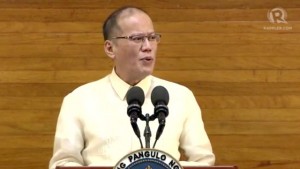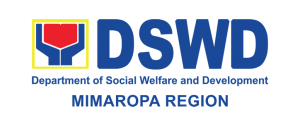President Benigno Aquino III slams critics of his flagship alleviation program during his last State of the Nation Address.

MANILA, Philippines – No magic can rush the effects of his administration’s Pantawid Pamilyang Pilipino Program (4Ps), President Benigno Aquino III said, chiding critics during his last State of the Nation Address (SONA) on Monday, July 27.
According to him, it is normal that the effects of this anti-poverty program are not fully felt immediately.
“Akala ata nila ito ay mahiwagang tableta na ‘pag ininom ng kinder ay college graduate na,” he said. (Maybe they think that this is like a magic pill that can transform a kinder student to a college graduate.)
Since 2008, during the time of President Gloria Macapagal Arroyo, the program has been constantly under criticism for alleged mishandling. Budget was increased despite the alleged flaws in targeting or the poorest aren’t getting the benefits.
There will be a change in atmosphere, Aquino said, when the effects of Pantawid fully materialize.
“Once benefits of the program are seen, they would be the first to claim they are the ‘father’ of the program,” he said in Filipino.
Among the accomplishments he cited under the program was the first batch of high school graduates from household-beneficiaries of Pantawid. In April, more than 300,000 graduated, 8,000 of whom received honors.
Department of Social Welfare and Development (DSWD) Secretary Corazon Juliano-Soliman referred to these graduates as the “fruits” of the program – an investment of the nation. (READ: From Pasay to UP: A valedictorian’s dream to become engineer)
The 4Ps provides cash grants to the Philippines’ poorest citizens. A household-beneficiary with 3 children can receive P1,400 ($30) a month or up to P15,000 ($331) a year.
Bigger coverage
The coverage of the DSWD-led program, which is also known as Conditional Cash Transfer (CCT), has increased throughout the years.
Launched in 2008 with only 380,000 household-beneficiaries, the program is expected to cover 4,436,732 in 2015.
Aquino said this was achieved without burdening taxpayers.
“Nagawa ito nang hindi nagtataas ng buwis maliban sa Sin Tax Reform,” he emphasized. “Ibig sabihin, tinatayang isa sa bawat Iimang kabahayang Pilipino ang nakatatanggap ngayon ng ayuda kapalit ng pagpapaaral at pagpapacheck-up, nang hindi dinadagdagan ang pasanin ng ating mga kababayan.”
(We were able to do this without increasing taxes, except for the Sin Tax Reform. This means that one out of 5 Filipino households receives cash grants under Pantawid for education, health services, without adding burden to other citizens.)
Based on its latest portfolio, 20 out of the 25 provinces with highest number of beneficiaries are also the priority areas identified in the latest memorandum of Aquino’s Social Contract. (READ: Where in the PH are the Pantawid beneficiaries?)
‘Leakage’ from previous administration
According to Aquino, the leakage among Pantawid beneficiaries may have occurred in 2009 – not during his administration. It is not him who should be blamed.
The DSWD, meanwhile, has been working hard to “clean up” the roster of beneficiaries, according to Soliman. These efforts are the continuous purging of list to only cover those who satisfy their requirements and improved targeting through the National Household Targeting System.
Meanwhile, Grievance Redress System (GRS), a system that collates complaints directed at the program or beneficiaries, have delisted more than 77,000 beneficiaries who do not satisfy the conditions. (READ: Soliman: DSWD is keeping 4Ps database clean) – Rappler.com
By: Jodesz Gavilan
Repost from Rappler.com
![]()


